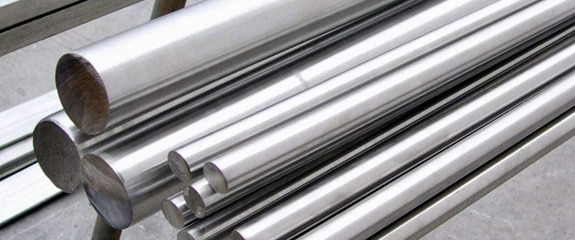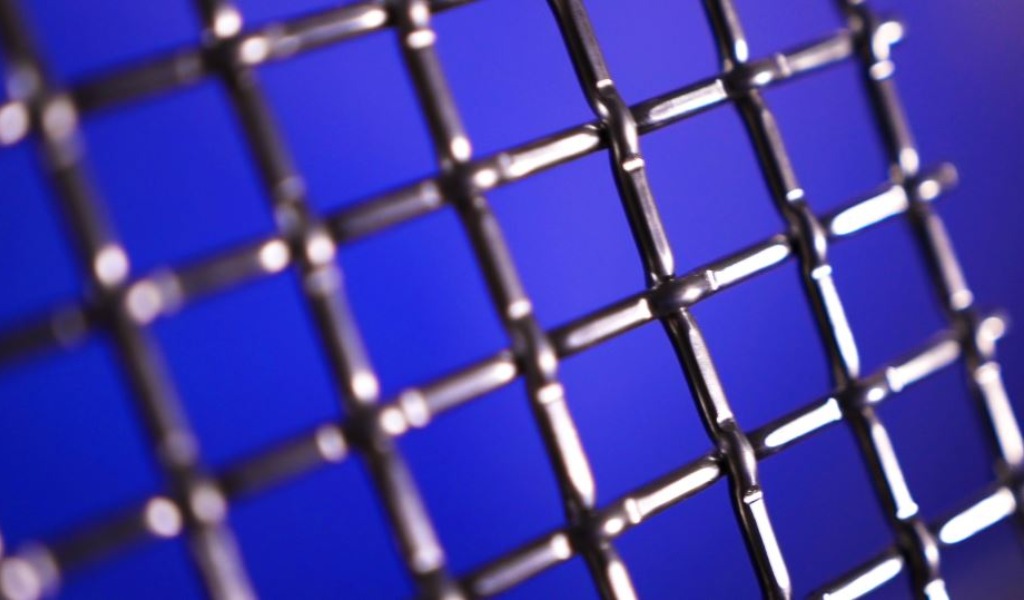Plain Carbon Steel vs Stainless Steel: Picking the Right Alloy
With more and more products and customer expectations influencing the market, you must continually seek to improve the efficiency of your process. This includes fine-tuning all aspects of your production line, from the milling machines down to the specifications of your woven wire mesh components.
More specifically, the alloy you use to weave your wire mesh.
Stainless steel is one of the most widely used alloys in the woven wire mesh industry. But sometimes stainless is not the best choice, leaving engineers with the task of exploring other wire mesh alloys, such as plain carbon steel.
This leaves us with the underlying question: how do plain carbon steel and stainless steel wire mesh compare?
W.S. Tyler has been a prominent leader in the wire mesh industry for over 150 years, helping engineers weave wire mesh into their production line.
With that, we wrote the following article to establish the critical differences between plain carbon steel and stainless steel, helping you best understand what makes sense for you. It will cover:
- How plain carbon steel is defined in the world of woven wire mesh
- The benefit of using plain carbon steel wire mesh
- How stainless steel is defined in the world of woven wire mesh
- The benefits of using stainless steel wire mesh
- Which wire mesh alloy is suitable for you
What Is Plain Carbon Steel?

Plain carbon steel, commonly referred to as plain steel, is a wire mesh alloy that contains carbon (.05% to 2.1) and a limited amount of other alloys. In fact, plain steel will never contain more than 1.65% manganese, .6% silicon, or .6% copper.
That said, plain carbon steels are divided into two categories: Low-carbon and high-carbon.
What Are the Benefits of Using Plain Carbon Steel?
As it contains an increased amount of carbon, plain carbon steel is known for delivering desirable hardness. The level of hardness delivers, of course, is dependent on the amount of carbon present.
Now, when working with low-carbon steels, you have the ability to form and weld wire mesh components with ease. While these fabrication qualities are lost with high-carbon steels, the increased strength level they deliver allows wire mesh to withstand high-impact applications.
What Is Stainless Steel?

In the world of woven wire mesh, stainless steel is defined as an alloy that has a specific carbon and chromium. That said, as it does not exist in steel naturally, chromium is added to stainless steel on a molecular level when in a molten state.
Stainless steel features properties that have been scientifically verified, which is why it's one of the most widely used alloys throughout the wire mesh industry. To that end, woven wire mesh is typically woven out of either a 300- or 400-series stainless steel.
What Are the Benefits of Using Stainless Steel Wire Mesh?
One of the most prominent characteristics of stainless steel is its chromium content. This, in turn, makes it exceptionally resistant to corrosive environments.
This is particularly true when the wire mesh is subjected to various industrial-strength alkalines and acids.
In addition to its resistance to corrosion, stainless steel is also known for maintaining its accurate performance when subjected to extreme heat. It does so by combating oxidation associated with high-heat applications.
With that, the durability of stainless steel is arguably its most attractive quality. This helps the individual stainless steel wires maintain their integrity and pore accuracy in harsh conditions.
Plain Carbon Steel vs. Stainless Steel: What Is Right for Me?
To best determine what alloy makes sense, you must consider the specific needs of your application and what it will do to the mesh. Will the mesh be heated? Will there be corrosive elements present?
This is the mindset you should have when designing the best possible wire mesh solution.
Now, when comparing plain carbon to stainless steel, it must be noted that plain carbon steel is not resistant to corrosion. Rust, in particular, is a concern with plain steel.
In terms of strength and durability, stainless steel provides the perfect balance compared to low-carbon steels. However, the strength of high-carbon steels surpasses that of stainless steel.
With material cost always a significant concern, it should be noted that plain carbon steel wire mesh tends to be cheaper than stainless steel wire mesh.
Improve the Flowrate of Your Wire Mesh with the Right Weave Pattern
Selecting the right alloy to use when designing woven wire mesh is critical to the durability, longevity, and performance of the final product. While stainless steel is the predominant alloy used, other alloys like plain carbon steel excel in specific applications.
Plain carbon still is an alloy with high carbon contents with a minimal presence of other alloys. This, in turn, delivers a wire mesh with desirable hardness and strength.
Stainless steel is a wire mesh alloy that contains a specific amount of carbon and chromium. This chromium inclusion ensures stainless steel wire mesh maintains its performance in highly-corrosive environments.
While selecting the right wire mesh alloy is crucial, it's only one piece of the puzzle. You must also identify a weave pattern that will accurately screen the desired particle size while delivering adequate flow.
Having woven wire mesh into countless industries over the past 150 years, W.S. Tyler has the know-how needed to help you hand-craft a wire mesh solution that works. Our team of customer-oriented engineers will work with you until you are confident your wire mesh will provide value that you can pass on to your customers.
To gain a more comprehensive of how weave patterns affect wire mesh performance and what wire mesh pattern is right for you, read the following article:
About Ronnie Brown
Ronnie is the Content Writer for W.S. Tyler and has four years of experience as a professional writer. He strives to expand his knowledge on all things particle analysis and woven wire mesh to leverage his exceptional writing and graphic design skills, creating a one-of-a-kind experience for customers.



